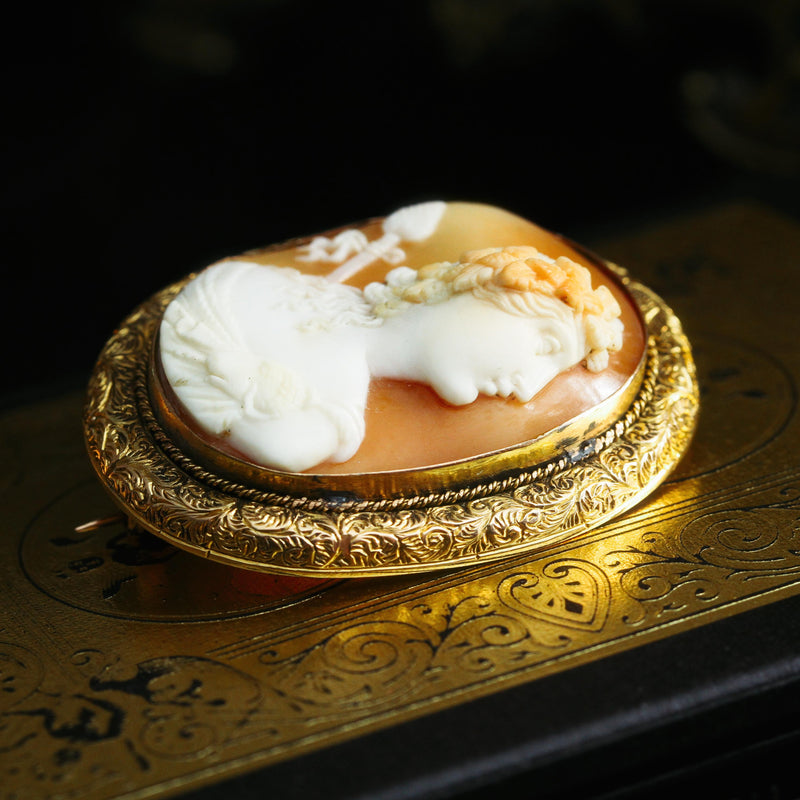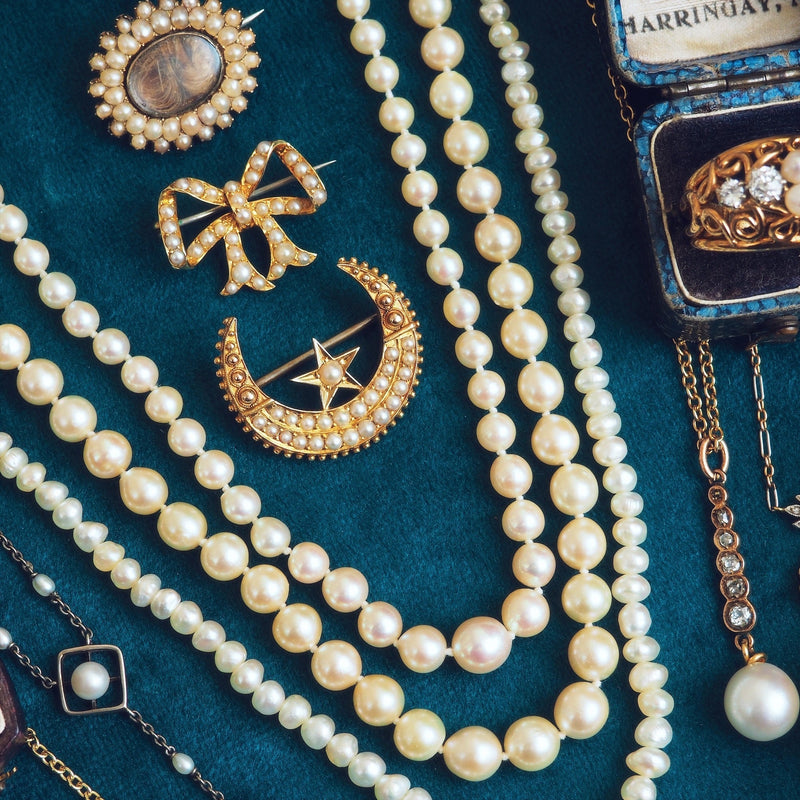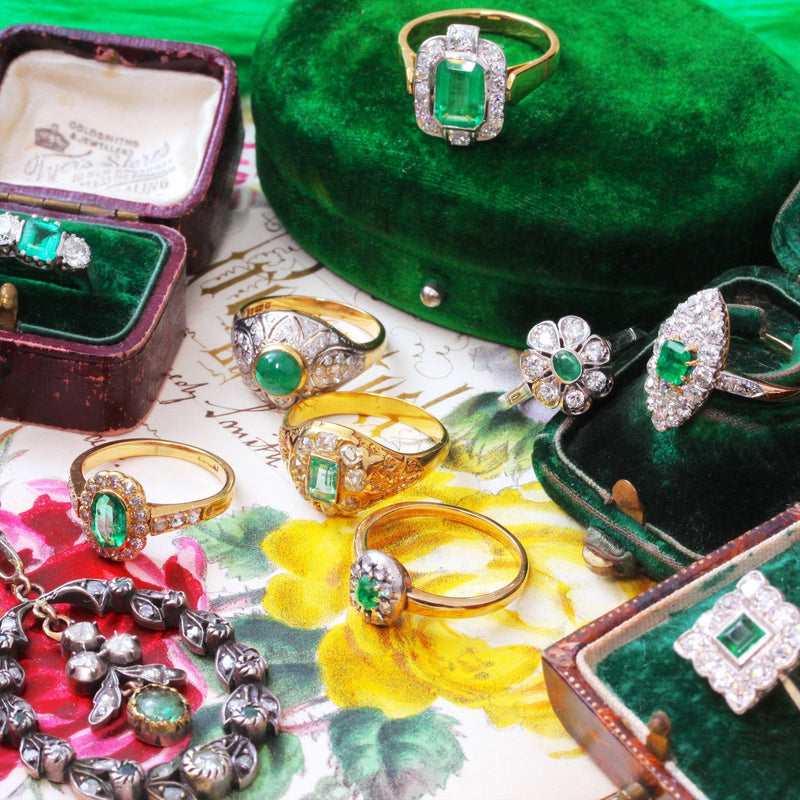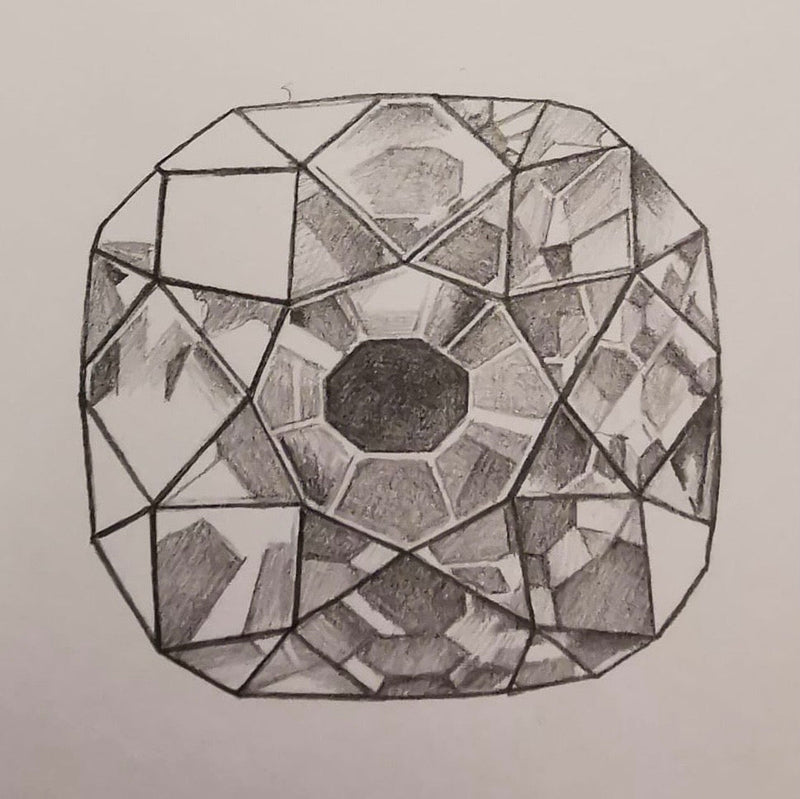
Technique and Materials

Cameo is a method of carving an object such as an engraved gem, shell, or piece of stone. The important characteristic of a cameo is it that it is a relief carving, featuring a raised image, as opposed to its opposite – intaglio - which has a negative image. Strictly speaking the word cameo only refers to carvings where the relief image is of a contrasting colour to the background. This is achieved by carefully carving a piece of stone or shell that has two (or occasionally more) contrasting colours in its layering that meet in a flat plane. The cameo carver removes all the first colour apart from the image he/she wished to keep, leaving the image on a contrasting background. Typical choices include Banded Agates, Sardonyx, Carnelian and some types of thick Shell such as Cassis Rufa (the helmet shell) and sometimes Corals. They can be carved in a high or low relief dependent on the material, subject and skill of the artist. Ancient cameos were most often made from semi-precious minerals such as Onyx, Agate and Garnet and these are known as hardstone cameos. In recent times shell and glass have been commonly used. Modern cameos are often produced by setting a carved relief portrait onto a background of a contrasting colour. This is called an assembled cameo, as it is made of two separate pieces.
Historical Cameos

In the cultures of Rome, Greece and Egypt, cameo craftsmen portrayed political figures, mythical heroes and gods of the era denoting power and allegiance along with powerful animals such as lions or bears and these were often set as rings. Beautiful stone cameos were also made in Greece as far back as the 5th century BC; the Farnese Tazza (shown here) being the oldest piece still surviving.

Rome is still today considered the traditional home of cameo carving; and in ancient they times were popular in the family circle of the Emperor Augustus. The most famous cameo pieces from this era are the Gemma Augustea, the Gemma Claudia (made for the infamous Emperor Claudius), and the largest flat engraved gem from antiquity – the Great Cameo of France. There are still today many surviving examples from the Empire at all levels of skill, both simple and quite crude to those of great delicacy and beauty, but it appears that around 300AD the manufacture of Roman cameos began to decrease, although some sort of cameo production existed right through the Middle Ages.
During the Renaissance cameos again became popular and Pope Paul II was an avid cameo collector, displaying his collection of cameos in rings on his fingers, most of them depicting religious subjects and medieval carvings. By this time the art of cameo carving had progressed to a high art, and women of nobility wore cameos to signify their high cultural status and education, mainly as signet rings with the largest simply admired as objets d’art.
More recent times

In more recent times, it was at the end of the 18th century that cameos started to become fashionable again and ancient Roman cameos became much sought after. During the late 18th and early 19th century, The Grand Tour around the cultural centres of Europe had become increasingly popular with rich young adults and nobility. Perhaps the most ‘not to be missed’ destination was Italy; with all its recently excavated historical treasures this was a period when many museums opened their doors to the public. Cameos dating to BC 79 were discovered in the unearthing of Pompeii and this added to the craze for this art form and all things 'ancient' and historical.
Travellers returning from ‘the tour’ would perhaps wear a cameo brooch depicting some famous European attraction, a copy of a piece from a museum collection or a portrait of a writer or poet. It was a way to demonstrate to society that you were a well-travelled and educated person. Well to do women had begun wearing impressively carved gemstones as a sign of cultured and prestige in the 18th century some of the wealthiest amassing important collections, notably The Devonshire Parure which can be seen at Chatsworth House. Carvers also realised that they too could replicate these expensive jewels the best being intricately and highly dimensional.
Napoleon Bonaparte was a cameo collector and cameo carvers came from all over Europe to France to create cameo jewellery for both men and women. Napoleon even commissioned furniture to be designed with cameos carved out of precious gems.

A timely and skilled process, carvers soon realized they could use Plaster of Paris moulds to recreate such gemstones and to copy notable cameo collections. Scottish gem engraver James Tassie began using moulds of these well-known collections to recreate glass pastes that could pass as authentic, carved jewels and was thus able to offer good copies of the originals at a much lower price. All things cameo-style were very fashionable and in England Josiah Wedgewood made assembled ceramic stoneware cameos of classical subjects at his factory in Stoke which are still made today.
After the 1830’s Carnelian or Helmet shells imported from the Caribbean and African coasts helped to fulfil the demand for cheap and affordable cameos alongside the local Italian Corals. These were not only soft and easy to carve, but also durable and many survive to this day. Additionally, in the 19th century cameos began to be made from petrified coloured lava extracted during the archaeological dig at Pompeii.

Young women now joined the young men on The Grand Tour and often purchased lava cameos as mementos or souvenirs of their travels. Lava 'stone' (often actually the dark coloured limestone found in the region) was much softer to carve leading to the art becoming more 'industrialised' and many of these surviving Lava and Shell cameos are not of the greatest quality.

Queen Victoria is credited with popularising the shell cameos in the 19th century, and although cameos became much more affordable and were not as highly prized. There were still top cameo makers producing beautiful pieces though: the work of Tommaso and Luigi Saulini was particularly sought after. The old subjects of Roman and Greek mythological scenes and characters were still extremely popular and can be seen in many of the antique Victorian cameos seen today. Portraits continued to maintain their popularity: those of Roman Emperors, thinkers and philosophers such as Socrates, poets such as Shakespeare etc. all intended to show your interests and educational attainments. Some of the new images from this era were pastoral in nature and most of them were carved into shells as cameos became available to a wider audience of the new 'middle classes'. The Whitby Jet carvers of Yorkshire also began to carve distinctive black cameos in their local mineral.
During more recent times, as costume jewellery became more popular in the 20th century, cameo jewellery replicas made from shell and plastic appeared. There is now a vast array of cameo types available, with contemporary designers often recycling designs from the past but they are sadly mostly worn by women. Hard stone cameos are still the most valuable and desired, but interestingly cameos from the Renaissance period are worth more than Roman ones. Simply because the Romans made many more of them!
See our current collection of antique and vintage Cameos here...








